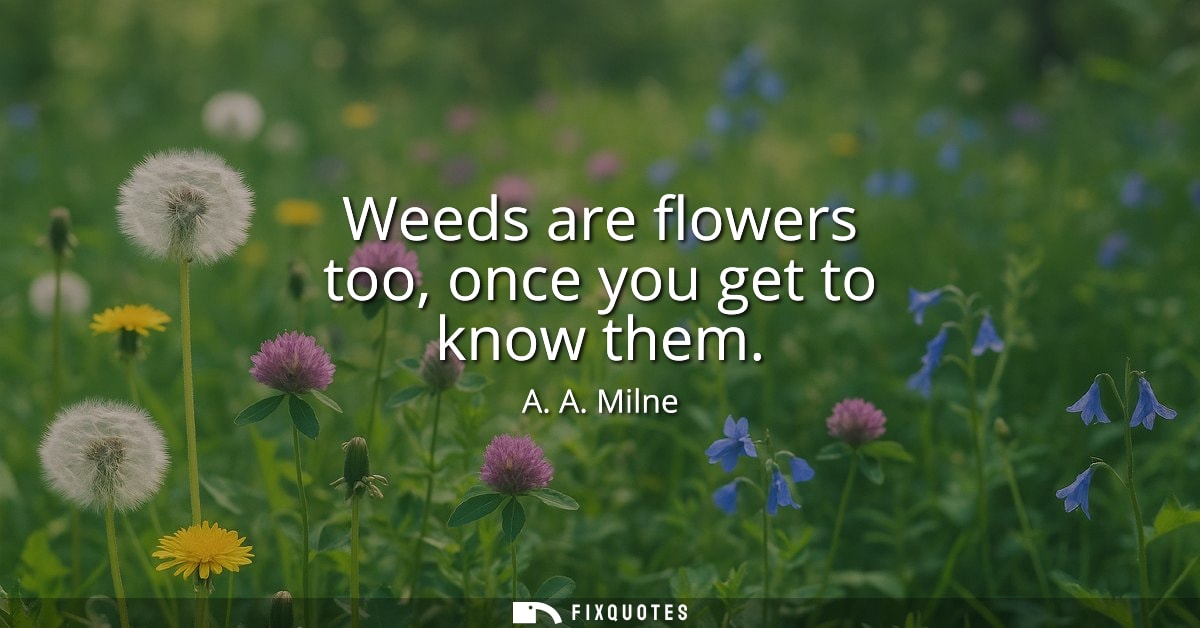"Weeds are flowers too, once you get to know them"
About this Quote
A. A. Milne’s gentle assertion turns conventional judgment upside down by asking us to reconsider our understanding of value and beauty. Weeds, typically cast as nuisances in gardens, are plants that grow where humans don’t want them. The label “weed” reflects human preference rather than any objective aspect of the plant’s nature. By suggesting that weeds are also flowers, Milne invites a shift in perception: beauty and worth are not fixed, but grow from the care and attention we bring to something, or someone.
An untended patch of earth might be a riot of dandelions, clover, and thistles, each with vibrant colors, complex shapes, and important roles in their ecosystem. A child, unburdened by adult notions of “proper” gardening, might delight in these same plants. Where adults see mess and intrusion, children find fairy homes and make-believe forests. To get to know a weed is to see its details, appreciate its persistence, and perhaps marvel at its resilience, a flower’s qualities by another name.
This idea isn’t limited to gardens. People can be misjudged just as quickly as plants, dismissed due to difference, non-conformity, or not meeting arbitrary standards. Taking time to understand those we might instinctively overlook can reveal unexpected richness, kindness, or beauty, a flower hidden behind the label of a weed. When we broaden our perspective, we realize our categorizations are incomplete at best and prejudiced at worst.
There is, too, a subtle appeal for tolerance, humility, and curiosity in Milne’s words. If a weed can be a flower when truly seen, the world itself holds many wonders we pass by in haste. The invitation is to slow down, look closer, and make space for the unfamiliar to reveal its hidden charm. By doing so, we cultivate an appreciation for diversity in gardens and in life.
About the Author

